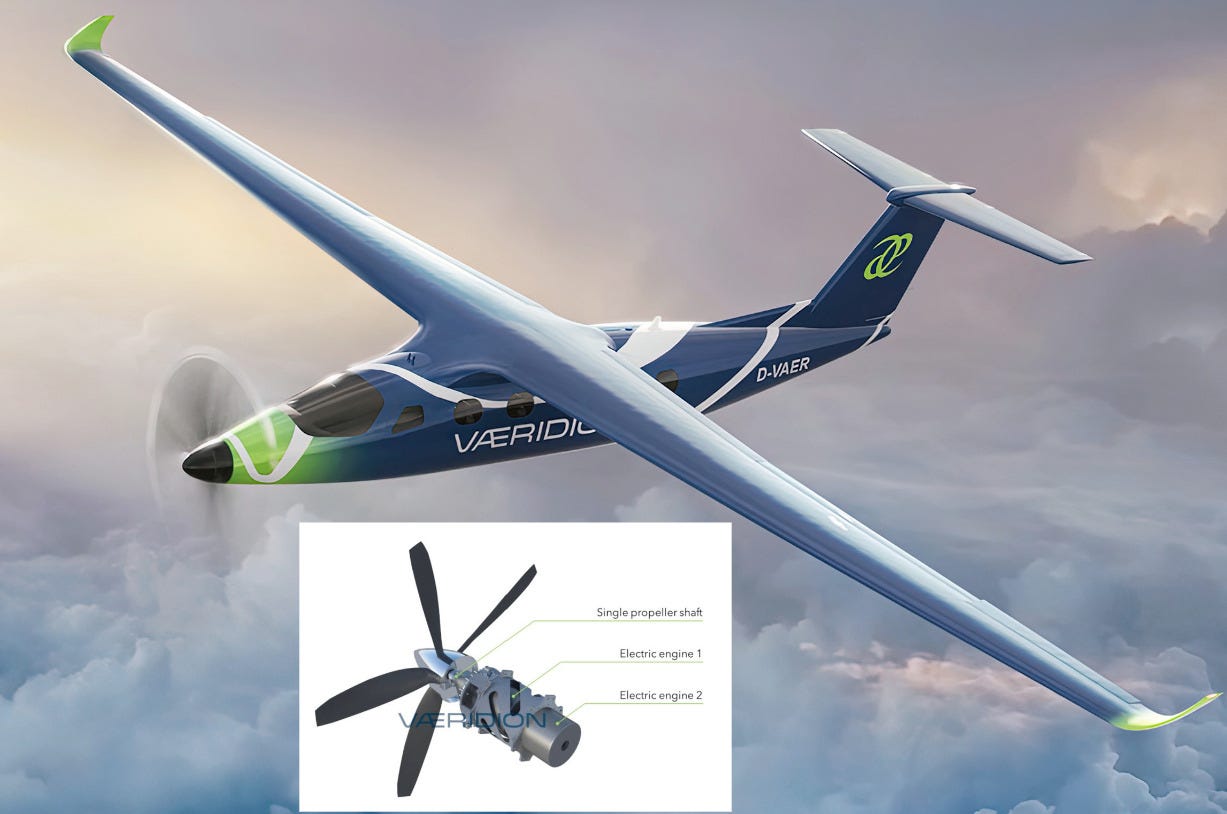Electrification lessons aviation should (and shouldn’t) take from EVs: Hybrid power trains
Analysis of hybrid electric power trains in aviation
The first article in this series was about batteries, the second article was about charging. In this article we’ll get into hybrid electric powertrains. We’ll cover:
Series hybrid (range extender)
Parallel hybrid
Independent hybrid (an aviation only hybrid?)
We will also talk about avoiding automotive mistakes:
Confusing terminology complicated by competitive positioning
Lastly, analysis - will hybrids be a quick stepping stone to BEV like in the automotive industry?
This long form article is accompanied by an interview with Ed Lovelace of Ampaire on hybrids in aviation.
I’m also planning future articles in this series on platforms, and on Hydrogen propulsion.
Let’s get into it!
Perfunctory note on vocabulary (words mean things!)
There’s a bit of a difference in the language between automotive and aviation. In automotive, we tend to call the internal combustion engine an engine, and call the electric motor a motor. In aviation it's a bit different, in part due to the regulatory wordings. If an airplane had two electric motors, motor controllers and high voltage systems turning the same prop, would it be “multi-engine”?
It turns out that yes, it would, from a regulatory perspective. To keep it simple, though, I will tend to use “engine” for combustion engines and “motor” to mean electric motors.
Series hybrid, or range extender (REx, EREV)
The automotive canonical example of the series hybrid could be the BMW i3 REX (with a special mention to the Chevy Volt). When the i3 was being designed and initially released, most EVs had between 60 and 85 miles of range. BMW sought to solve the range problem by reducing weight and rolling resistance, and also by installing a small 3 cylinder engine and fuel tank. If the driver needed more range, the engine would kick in and recharge the battery.
However, drivers still needed to change the oil, oil filter, fuel filter and other maintenance associated with combustion engines. In the end, the i3 was (and still is) a cult favourite, but the Model S with its 200 miles range on only battery changed the game. Never count out batteries - the cell level price of lithium ion batteries in 2013 was $350/kWh - today that’s $78/kWh, with prices in China seen as low as $55 / kWh.
In the common automotive series configuration, the electric motor and battery are providing all of the power in the powertrain, the combustion engine is limited to supplemental energy (charging). For instance, driving a range extended BMW i3, as the high voltage battery runs low, its gas engine simply starts up and begins charging the battery while driving down the road so that the driver isn’t forced to pull over and charge right away.
These are almost always “plug in hybrids” (PHEV) - drivers end up putting both gas in the tank and electricity in the battery directly. The plug in this case could be a standard household electrical connection, or could be a DC fast charger.
Ancillary systems
In automotive, most electrical parts are expecting a 12V power supply, while the high voltage traction battery will be outputting voltage well exceeding 300V - so, most EVs still come with a small 12V, often lead acid battery to run these systems. Instead of being charged by an alternator, there is a charging unit in the car dedicated to keeping the 12V topped up from the high voltage battery.
While in automotive it's common to run power steering, AC compressor, hydraulics and other systems directly off the engine, a range extender design series hybrid can’t do that, as the combustion engine will only be running when the high voltage battery runs low. A purely electric drive solution needs to be in place for all ancillary systems, making series hybrids much more similar to full EVs (BEV).
Canonical aviation example: VÆridion Microliner
While the BMW i3 Rex is the canonical automotive example, VÆridion’s Microliner is the closest fit that I see in aviation. Entering into service in 2030 (estimated), The Microliner regional airliner will carry 9 passengers and 2 pilots. They are aiming for a 400km all electric range excluding reserves. The design includes a high, wide wing with winglets; multi- engine, single prop, and a T tail.
Powertrain
VÆridion has described using a small range extender that would only be used as a reserve - so, the combustion engine would only be switched on in a handful of flights per year when the aircraft is delayed, redirected to a different airport or some other situation requiring its reserve capacity.
Keep reading with a 7-day free trial
Subscribe to SkyZero.io Newsletter to keep reading this post and get 7 days of free access to the full post archives.


